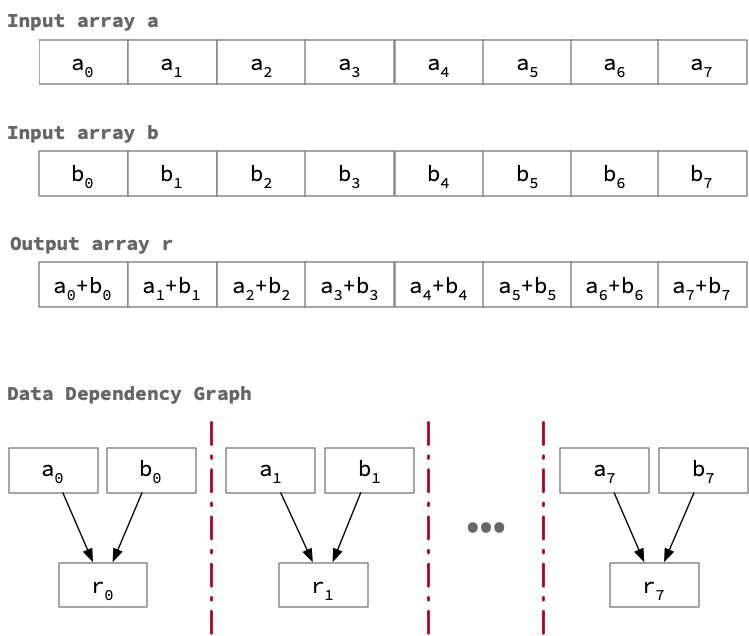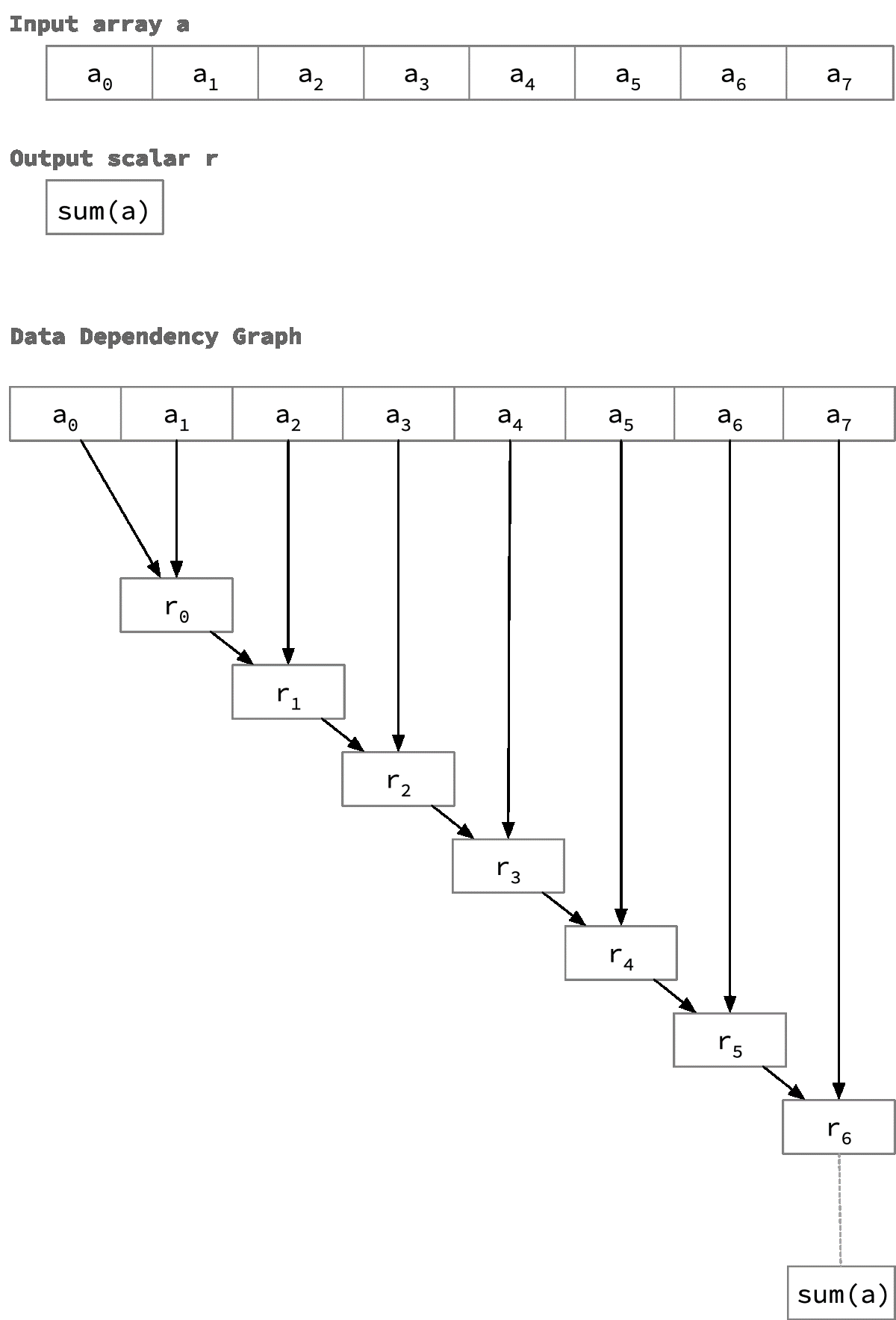Data Dependency
Data dependency occurs when a computation depends on the results of a previous computation. When data dependency is present in an algorithm or computation, the program must execute the operations in the intended order to arrive at the correct result. Any reasonably complex algorithm will involve some degree of data dependency.
In serial programming, the program will execute statements sequentially and in the same order they appear in the code. Thus, managing data dependency in a serial program is a matter of writing the code statements in the correct order. In parallel programming, where some portions of the code are executed simultaneously, managing data dependency is more complicated.
Recognizing which parts of your code involve data dependency is the first step to ensure correct parallel computation. The first two examples below show simple computations with no data dependency. These are followed by two examples with significant data dependency, showing how the algorithm you choose may reduce the data dependency in your program.
Example 1: No dependency
Consider a program that takes an input array and applies a unary function to each element to compute an output array. In this case, each element of the result can be computed independently, so the program is highly amenable to parallelization.


Example 2: No dependency
Suppose a program accepts two input arrays, A and B, and computes an output array by combining corresponding elements of A and B. In this case, the program is still easy to parallelize because the inputs and outputs are all independent from each other; that is, no operation depends on the outcome of a previous operation.


Example 3: High dependency
The choice of algorithm impacts data dependency. Consider a program that computes the sum of an input array. In one implementation, the program starts with the first element and accumulates the sum element-by-element to arrive at a final result. This algorithm produces a pattern of data dependency that is resistant to parallelization.


Example 4: Reduced dependency
An alternative algorithm to compute an array sum might add consecutive pairs of elements to produce a new array that is about half the original input size, then repeat the process of combining pairs of elements until the output array reduces to a single element. In contrast to the first array summation algorithm, this alternative algorithm can take advantage of parallel tasks — at each stage of the reduction, each pairwise summation can be performed by a separate task. You can see this in the dependency graph below: it has the same number of pairwise summations as the first graph, but the pairs are rearranged so that more of the sums can be done in parallel.


CVW material development is supported by NSF OAC awards 1854828, 2321040, 2323116 (UT Austin) and 2005506 (Indiana University)